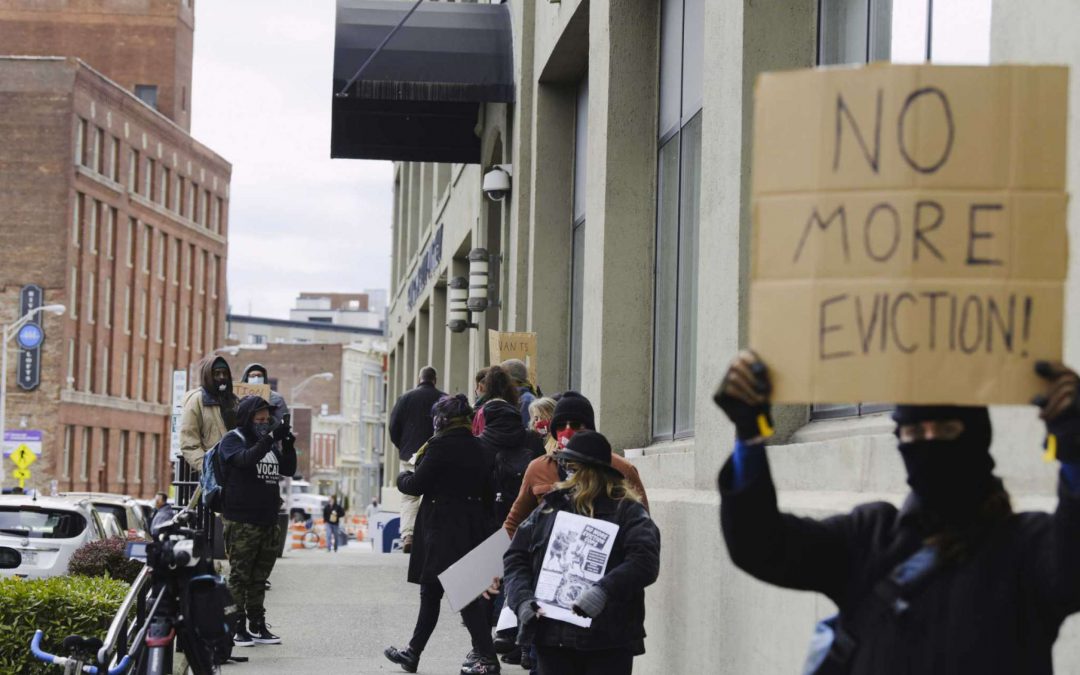WASHINGTON — Housing rights advocates, community leaders, and faith-based organizations across the country are scrambling to provide resources and funding to thousands at risk of losing their housing when the federal eviction moratorium ends on Aug. 1.
The moratorium was first put in place in September of 2020, by the Centers for Disease Control and Prevention. It was previously extended under both then-President Donald Trump and President Joe Biden. So far, the CDC has not signaled that it will extend the moratorium again, though Democrats in Congress have petitioned to have it extended.
Advocates say many renters will be facing houselessness if the moratorium expires at the end of the week. While there is no standardized system for collecting eviction and renter data, The National Equity Atlas, a data and policy tool developed by the University of Southern California Equity Research Institute, estimates the number of households behind on rent at almost 6.4 million, and the estimated total rent debt to be over $21 billion.
The National Equity Atlas also estimates that the 64 percent of those behind on rent are people of color, 81 percent are from households that make less than $50,000 annually, and 51 percent are unemployed.
“Historically, communities of color, queer renters, and disabled renters, and renters with criminal records have been the ones who have always bore the brunt of the housing system’s pro-landlord policies,” Jaboa Lake, policy analyst at the Center for American Progress, told Sojourners. “Putting in place tenant protections and renter protections isn’t just a housing issue, it’s a racial justice issue, it’s an LGBTQ justice issue, it’s a criminal justice issue.”
Congress allotted over $45 billion to states to provide assistance to households behind on rent in recent stimulus packages but only a portion of the funding has been distributed. Lake said it was “frustrating,” that so little had been distributed, noting that there is not a coordinated system to handle the application and rent aid distribution process.
But evictions and debt from high rent are not new issues, Rev. John Cleghorn of the Caldwell Presbyterian Church in Charlotte, N.C., told Sojourners. Cleghorn is a member of Faith in Housing, a recurring workshop dedicated to helping congregations create affordable housing. He said COVID-19 only exacerbated an already dire housing crisis in Mecklenburg, Charlotte’s county, which had some of the highest eviction rates in the country before the pandemic.
“Charlotte has been and continues to be a city of haves and have nots,” Cleghorn said.
Cleghorn said he had church members who moved to farther counties after encountering the lack of affordable housing options in the area.
According to Cleghorn, Caldwell Presbyterian used to host a homeless shelter that housed women for six months at a time, but the church wanted to provide a more permanent solution for those experiencing homelessness. The church is currently building a 21-unit affordable housing complex on its campus, which will also provide case worker services for people experiencing chronic homelessness.
Catholic Housing Services of Western Washington, a faith-based organization in Seattle that provides affordable housing, was already experiencing waitlists and affordable housing shortages before the pandemic, according to their director, Flo Beaumon. But the pandemic exacerbated the problem, and Beaumon said the situation will get worse as the moratorium expires.
“All of this takes social investment and government investment,” Beaumon said. “Faith-based organizations cannot do it by ourselves.”
Mike Buchman, communications director at Solid Ground, a nonprofit that provides a hotline for tenants across the state, told Sojourners that although Seattle has its own eviction moratorium in place, the city lacks enough shelters for people experiencing homelessness.
“We have the second or third largest number of unhoused homeless people in the country,” Buchman said. In addition to a hotline, Solid Ground also provides other resources and information that could be helpful for people struggling to pay rent. They recently created a video about how tenants can prepare for the end of the moratorium, and they are working with other organizations to help people find funds and affordable housing.
“When the eviction moratorium ends at the end of the week, millions of Americans across the nation will face increased housing insecurity and related outcomes (e.g., food insecurity, health impacts), which are only made worse by a global pandemic that persists,” Chris Vincent, vice president of government relations and advocacy at Habitat for Humanity, told Sojourners in an email. “Fundamental relief is needed to effectively stave off the threat of housing instability, now and in the future.”
Some cities and states have their own eviction moratoriums that will continue after the CDC moratorium expires, but they are short-term solutions to a long-term problem, according to Lake.
“We need robust investments in ending homelessness and making sure that renters have protections so that they aren’t going to be falling into homelessness,” Lake said. “We both need to put investments in repairing the existing housing we already have and building housing.”


